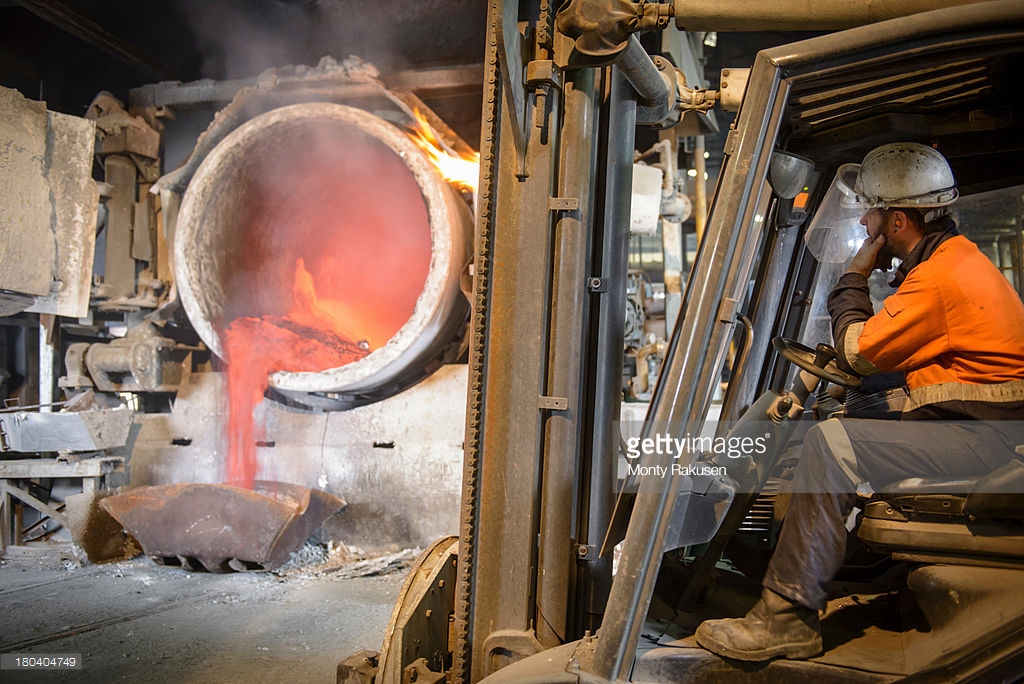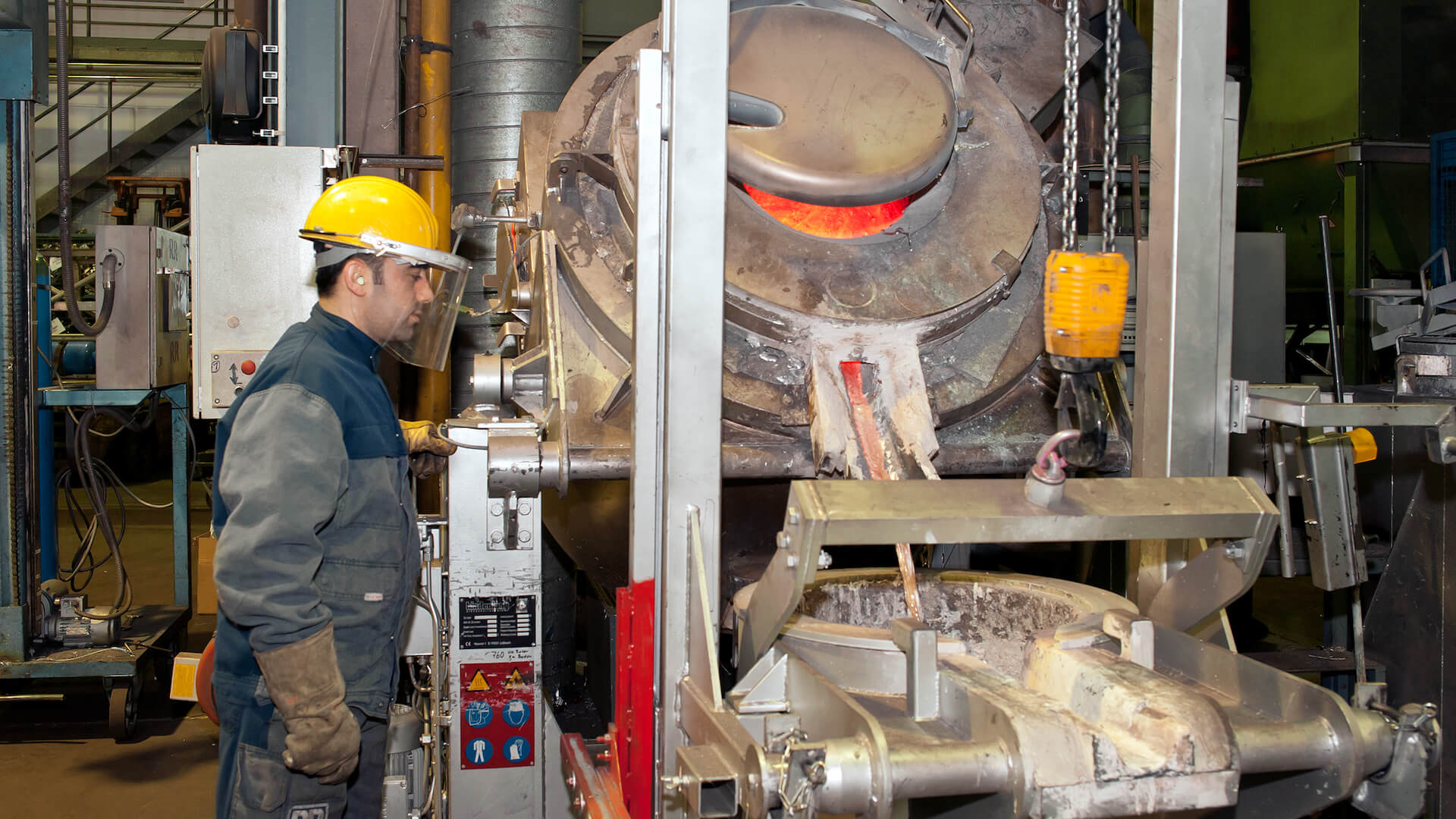Understand the Environmental Impact of Metal Castings and Recycling Practices

Comprehending the Refine: How Aluminum Foundries Create High-Quality Products
Aluminum foundries play a vital role in creating high-grade products via a thorough process. It begins with melting raw aluminum, which removes contaminations. Later, numerous molding techniques shape the steel into desired forms. Accuracy during putting and solidification is important to meet exact specifications. The final phases include completing touches that boost sturdiness and appearance. As technology advancements, these procedures are improved further. What technologies are forming the future of aluminum foundries?
The Melting Process: Changing Raw Aluminum
The melting procedure acts as a crucial action in transforming raw aluminum right into functional items. Aluminum scrap or raw ingots are placed in a heater where they are subjected to high temperatures, normally reaching around 660 degrees Celsius. This intense warmth causes the aluminum to melt, allowing pollutants to climb to the surface, where they can be skimmed.
Numerous melting techniques, such as induction melting or gas-fired melting, may be utilized relying on the particular demands of the factory. The choice of method can affect power efficiency and metal top quality. Maintaining precise temperature control is crucial to guarantee consistent melting and to stay clear of oxidation that can jeopardize the product.
When thawed, the aluminum is all set for additional processing, establishing the stage for subsequent operations that will certainly mold and mildew it right into certain forms and products. Aluminum Castings. The quality of the melting process directly affects the stability of the last aluminum things generated
Molding Methods: Shaping the Future
After the aluminum has actually been thawed and pollutants got rid of, it is all set for forming via numerous molding techniques. One of the most widespread techniques is sand casting, where a mold is produced from sand and a binder. This method permits complex styles and is cost-efficient for reduced to medium production runs. An additional preferred method is die casting, which includes compeling liquified aluminum into a steel mold under high stress. This technique results in high accuracy and smooth surface areas, making it suitable for automation.
Irreversible mold and mildew spreading is also utilized, using recyclable molds that improve dimensional accuracy and surface coating. Each molding method provides special advantages, enabling foundries to customize their procedures based upon item specifications and production quantity. By picking the appropriate approach, aluminum foundries can ensure remarkable high quality and efficiency in their final items, solidifying their duty in different markets.
Pouring and Solidification: The Art of Casting
Pouring liquified aluminum right into molds marks an important stage in the spreading procedure, where accuracy and timing are essential - Metal Castings. The foundry team must carefully regulate the temperature of the aluminum to guarantee ideal fluidity, stopping flaws such as porosity or chilly shuts. As the steel is poured, it flows into the details of the mold, loading every dental caries to develop the preferred shape
Solidification begins immediately as the liquified aluminum alters and cools to a strong state. This stage is influenced by a number of aspects, consisting of the mold and mildew product, thickness, and ambient temperature level. The cooling price has to be taken care of to avoid stress cracks or bending in the finished product.
When strengthened, the aluminum takes on the specific dimensions and features of the mold, setting the stage for succeeding handling. This pouring and solidification procedure exhibits the fragile balance of art and scientific research in aluminum spreading, vital for creating premium products.
Finishing Touches: Ensuring Quality and Accuracy
Ensuring high quality and precision in aluminum products needs careful attention to detail throughout the completing process. This stage includes different strategies focused on enhancing the surface area features and dimensional precision of the cast components. Common techniques include machining, surface area treatment, and polishing. Machining corrects any kind of dimensional disparities and accomplishes the desired resistances, while surface therapies, such as anodizing or powder finishing, give rust resistance and boost visual appeal.
Sprucing up gets rid of surface area blemishes, resulting in a smooth coating that meets stringent specs. Quality assurance is critical; each completed item undertakes strenuous assessment to determine any defects. Advanced determining tools, like coordinate gauging equipments (CMM), are frequently utilized to assure compliance with style requirements. Additionally, experienced professionals play a vital role, bringing experience and proficiency to determine issues that makers might neglect. This complete finishing procedure inevitably guarantees that the aluminum items meet customer expectations for top quality and efficiency.
Advancements in Aluminum Foundry Modern Technology
The quest of high quality and accuracy in aluminum products has brought about significant developments in factory modern technology. Innovations such as robot automation have streamlined procedures, improving effectiveness and lowering human mistake. These robotics are now efficient in performing complex jobs, including specific mold handling and product pouring, which assures constant product quality.
On top of that, the combination of computer mathematical control (CNC) machines has actually changed machining procedures, allowing for detailed styles and tighter tolerances. Advanced simulation software application facilitates better process planning by optimizing and predicting potential problems metal flow. In addition, the fostering of eco-friendly methods, such as reusing aluminum scrap and making use of low-emission heating systems, has enhanced sustainability in the market.

Regularly Asked Concerns
What Sorts Of Aluminum Alloys Are Frequently Used in Shops?
Frequently used aluminum alloys in foundries consist of 356, 319, and 413. These alloys are known for their exceptional casting buildings, mechanical stamina, and resistance to corrosion, making them appropriate for a large range of applications.
Just How Do Foundries Guarantee Ecological Sustainability in Their Processes?
Shops execute ecological sustainability by recycling aluminum scrap, maximizing energy performance, reducing discharges, making use of green materials, and sticking to regulatory requirements, therefore reducing their eco-friendly footprint while preserving manufacturing quality and effectiveness.
What Safety And Security Steps Are Applied in Aluminum Foundries?
Aluminum foundries execute different safety and security measures, including personal protective equipment, ventilation systems, normal safety training, emergency action procedures, and tools maintenance checks. These methods intend to decrease hazards and assure the well-being of all workers involved.
Just How Do Factories Deal With Issues in Cast Products?
Foundries attend to issues in actors items by using extensive examination techniques, consisting of visual checks and non-destructive testing. When problems are identified, they may rework or scrap items, ensuring adherence to quality standards and customer requirements.
What Is the Regular Preparation for Aluminum Casting Projects?
The common lead time for aluminum spreading tasks varies from a more info few weeks to numerous months. Factors influencing this timeline consist of layout intricacy, production volume, and the schedule of products, which vary considerably across different foundries.
Aluminum foundries play a necessary function in producing high-quality items with a precise procedure. Aluminum Castings. The shop team must carefully manage the temperature of the aluminum to assure optimal fluidity, preventing defects such as porosity or cool shuts. The search of high quality and precision in aluminum products has led to substantial advancements in shop modern technology. Frequently used aluminum alloys in foundries consist of 356, 319, and 413. Aluminum foundries carry out various safety and security procedures, including individual protective tools, ventilation systems, normal safety training, emergency situation response procedures, and tools maintenance checks